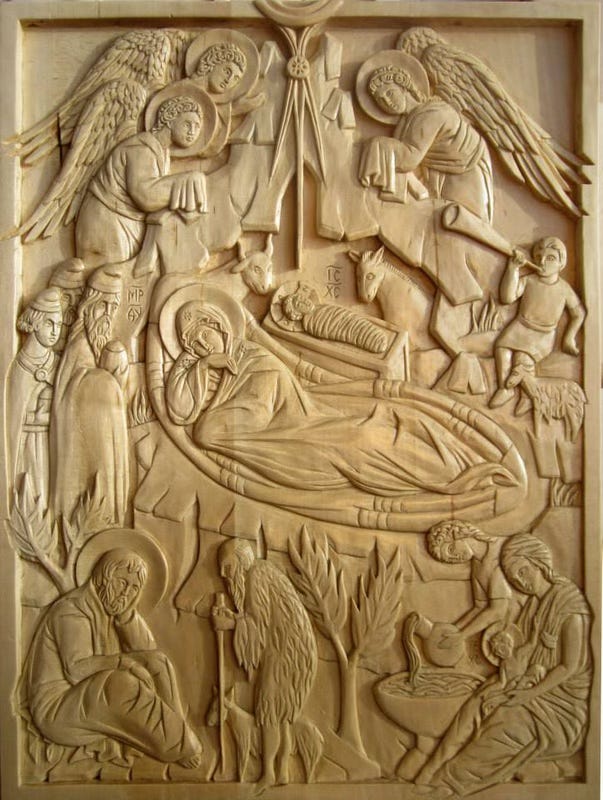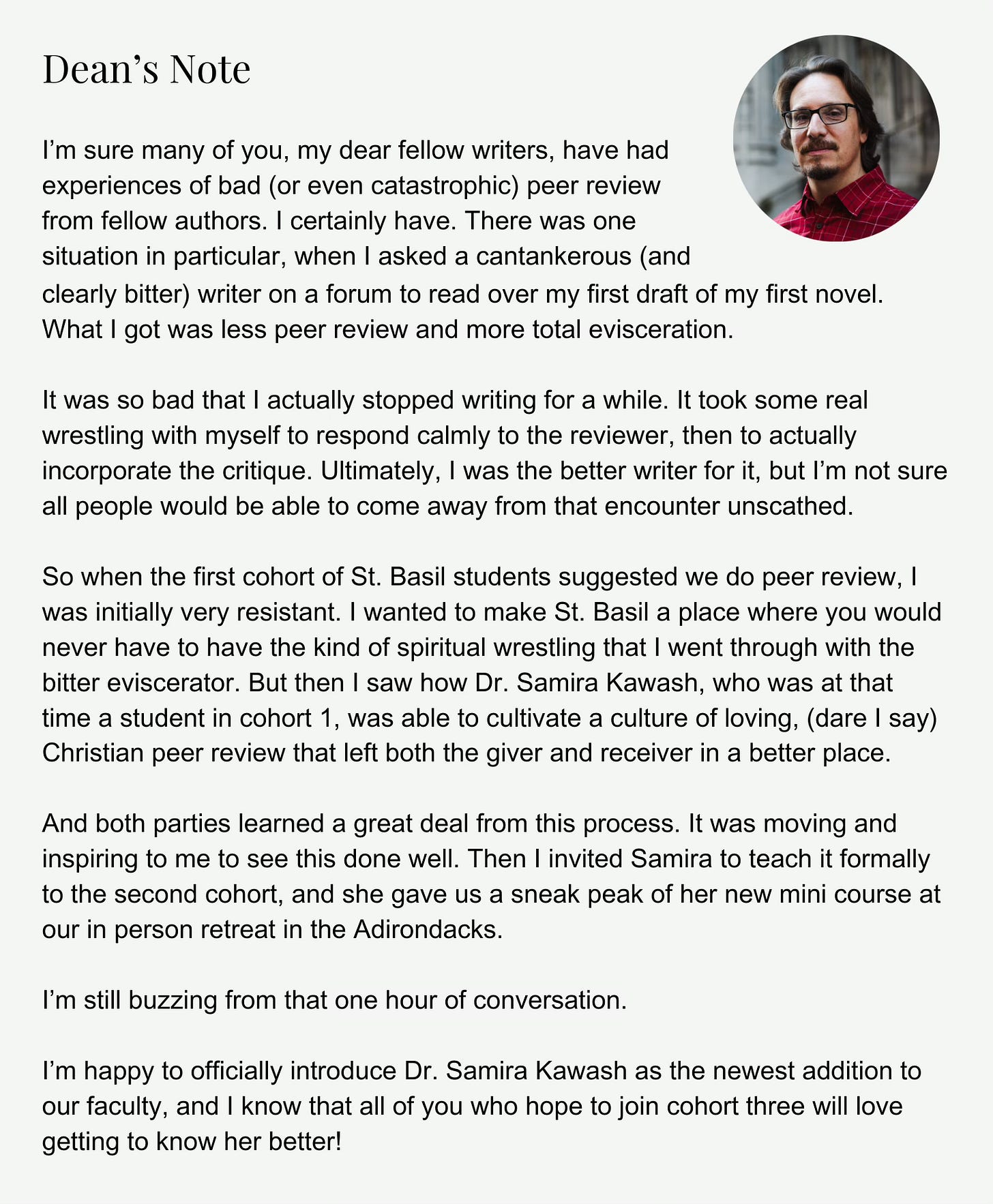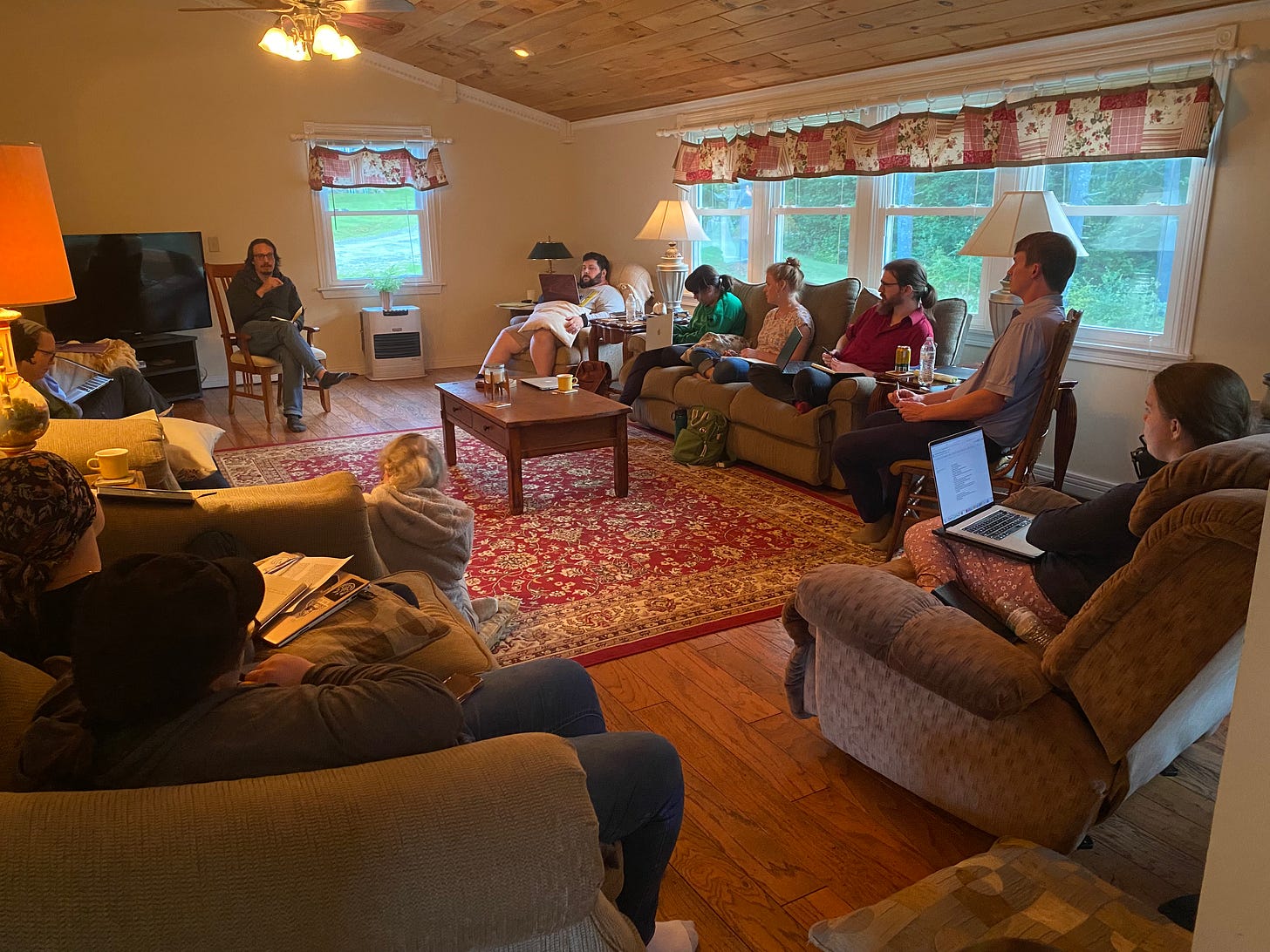A Word from Anna
Dear friends,
It’s my pleasure to introduce Samira Kawash, a good friend from my cohort at St. Basil’s who is now an instructor.
Meet Samira
Samira Kawash holds a PhD in literary studies from Duke University and is a professor emerita at Rutgers University. She is the author of Candy: A Century of Panic and Pleasure and Dislocating the Color Line, as well as the founder of the website Candyprofessor.com. She is a regular contributor to First Things, and her essays have also appeared in The Atlantic, Compact Magazine, and beyond. Kawash lives in Brooklyn.
How critique works at St. Basil’s
Throughout the fall semester, students are invited to submit and receive feedback from Deacon Nicholas Kotar. In the spring semester, students are encouraged to form peer support critique groups. Led by Dr. Samira Kawash, this workshop intensive helps students learn how to productively offer and receive feedback so they can form core critique groups that support their writing work for years to come.
A Guide for Writers: What the Theotokos can teach us about sharing our writing
A dear friend and fellow writer once told me that, when it comes to writing a new book, we should “be like the Theotokos who ‘kept all these things and pondered them in her heart’” (Luke 2:19).
What exactly was Mary pondering in her heart? The angel’s declaration to the shepherds: “There is born to you this day in the city of David a Savior, who is Christ the Lord” (Luke 2:11).

These words echo in my mind whenever I’m deciding if it’s the right time to share my writing. They have me asking all sorts of questions about how these angelic tidings of good news are akin to the flash of inspiration for writing a good story, about the right time for pondering the story in our heart, and about the right time for sharing the story with a few people and then the world.
(Although the shepherds become some of the first evangelists of Christ’s advent, Christ’s time for public ministry has not yet come.)
Anyone who has been writing for a while knows that there’s a proper time and place for “going public” with their writing and that there’s also wisdom in waiting. In fact, there’s a very real danger in exposing creative endeavors too early, too often, or to the wrong people.
Exposing writing too early: sometimes, when we talk about our ideas too early, we get the reward of attention and reaction, which can fool us into thinking we’ve already processed the idea without doing the work. So what happens? We move on. Social media is a prime example: it’s often a “quick catharsis” for creative impulses followed by a dopamine rush of likes and comments. But we never know what our quick and clever quip might have ripened into if held in our hearts a little longer. It might have been the germ of a full novel, but because we’ve prematurely wrenched the seed up from the soil into the light, we move on before we have the chance to find out.
Exposing writing too often: too many cooks ruin the soup, and too many critics create a cacophony of confusion. Sometimes, even when we allow our nascent idea to ripen and mature before sharing our work, we can still lose our original vision through a type of false humility that allows readers an inappropriate influence over our ideas; this particularly happens if we involve too many readers too early and weigh all feedback equally.
Exposing writing to the wrong people: sharing writing with the wrong people can, at best, result in ineffective affirmation and, at worse, result in evisceration that fells rather than prunes our work. Some people never write again after receiving this kind of feedback.
Nevertheless, despite all these cautionary words, there is a time and a place for inviting others into our work. The right comment at the right time from the right person can illuminate our blind spots and transform good writing into inspired writing.
How do you know when to share your writing?
Every writer will develop their own cadence for sharing work, but here are some guidelines many writers find helpful:
Zero and first drafts — these are private; you’re figuring out what you’re trying to say, and you don’t really need another opinion when you haven’t yet formulated your own.
Second and third drafts — involve trusted beta readers (generally 2-4) and/or a good developmental editor.
Fourth — involve a copy editor.
Fifth — involve a proof reader; open to ARC readers.
Publish and share with the world!
How do you know who should read your writing?
I’ve heard it said that the people we allow a voice in our lives should be those with whom we’ve established mutual respect, trust, and love. I see no reason why the same shouldn’t follow in the creative sphere.
More specifically, I’ve found the advice helpful that you should look for readers who can fill these distinct roles:
A critic who knows your genre and the craft well and whom you can trust to be honest about where your work falls short.
Someone who “gets” your vision and will keep you honest about when you’re on track and when you’re deviating from it.
A cheerleader who believes in you as a writer and will encourage you when the going gets tough, as it inevitably will.
How do you know what to share and how to share it?
There is a lot that goes into becoming the type of reader who can offer helpful feedback and the type of writer who can process feedback constructively. In fact, that’s why we have a workshop on giving and receiving feedback at the St. Basil Writers’ Workshop.
If you want to know more, you may just have to apply ;). Applications are still open until February 28th, so be sure to submit today and spread the word to your writer friends!
All you need to do is submit a $25 application fee (using the link above) and email a 5,000-ish sample of your writing (fiction or narrative non-fiction) to Dn. Nicholas Kotar a nkotar@stacollege.org.
You can learn more about our program here.
Best of luck!








Interesting timing that I ran across this today. I just sent the almost final draft of my new (first book ever )book out to a few people for critique and review. I need a few reviews :-). Hopefully I’ll be able to use whatever the responses are.
Great guidance on who should read your work, Nicholas!